Reviews
Why the New ART CLUB2000 Retrospective Offers Lessons for Today’s Artists That Transcend Pure ’90s Nostalgia
The art collective as conceptual "pose band."
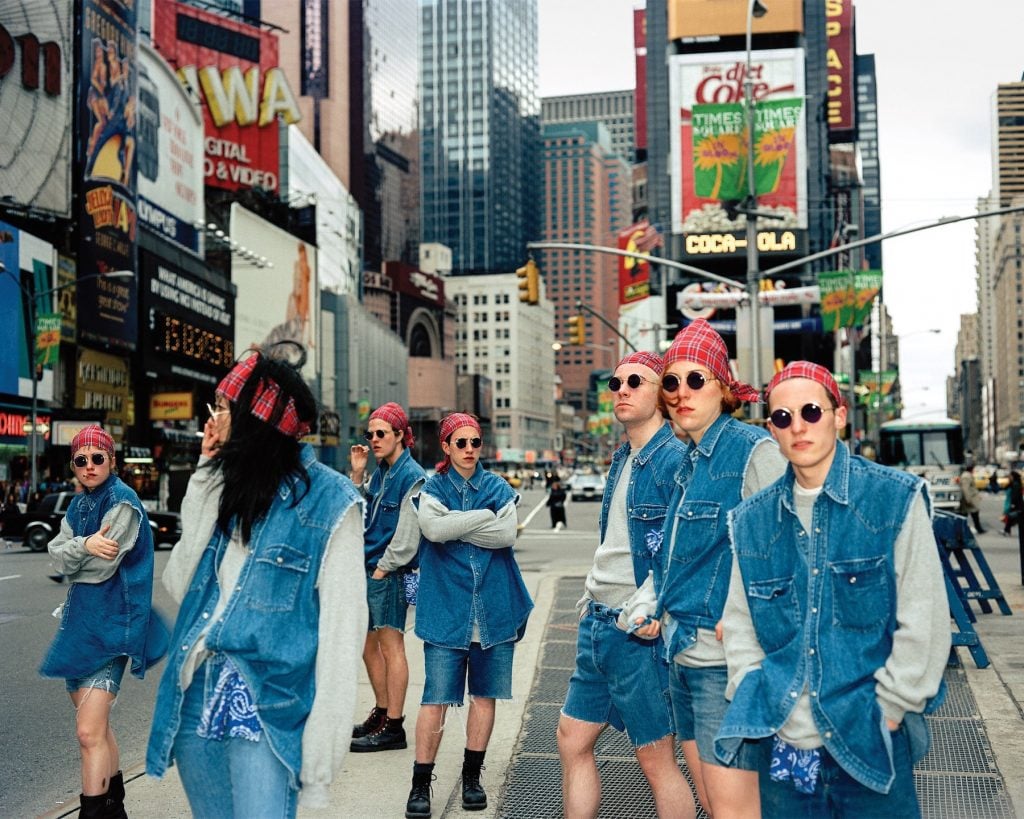
The art collective as conceptual "pose band."

Ben Davis

Supposedly, when he first saw the early-‘90s group photos by ART CLUB2000, art dealer Colin de Land hated them. Not because the images were bad—quite the contrary. Because he knew that they were too good, that the group’s collective self-portraits would overpower everything else they tried to do.
He was right, more or less. The cool retrospective of ART CLUB2000’s work at Artists Space is sort of about the Monkey’s Paw curse of generational fame—a curse which the group was very much aware of.
De Land’s American Fine Arts was a much-mythologized alt-commercial space, what Roberta Smith once called an “anti-art gallery.” Embracing “no capital as cultural capital,” its scrappy program took all kinds of fanciful risks.
ART CLUB2000 was one of those risks, essentially an invented entity, formed at the dealer’s suggestion out of a gaggle of brash Cooper Union students who had been pestering the gallery: Patterson Beckwith, Gillian Haratani, Daniel McDonald, Shannon Pultz, Sarah Rossiter, Sobian Spring, and Craig Wadlin.
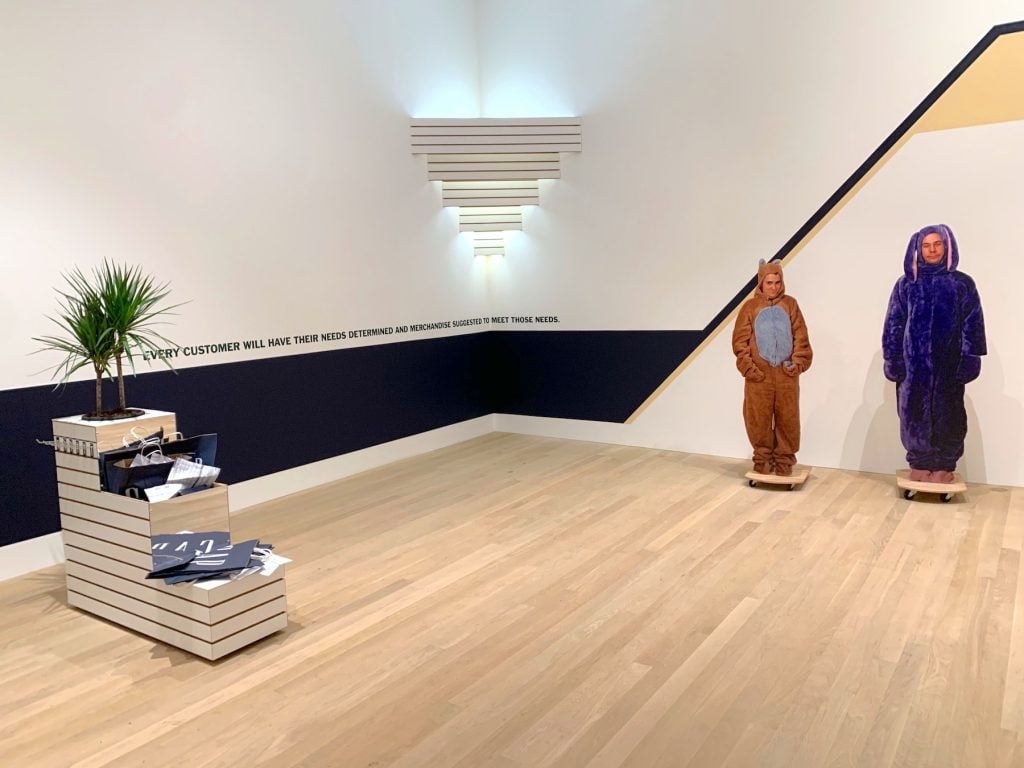
Installation view of “ART CLUB2000: Selected Works 1992-1999″ at Artists Space. (Photo by Ben Davis.)
In this sense, ART CLUB2000 pointed forward to the prefabricated pop acts that would dominate the charts of the end of the decade—your NSYNCs, your Spice Girls—as much as they pointed backwards to ‘80s activist-art collectives like Group Material and General Idea (Julie Ault and Doug Ashford, of Group Material fame, were teachers at Cooper).
They wanted, as Rossiter once explained, “To have the reins of power handed over to us, and to be viewed as generational spokesmodels. We wanted people to view us as a group intent on being observed as well as innocent, dynamic, and perverse.”
The output of their first, 1993 show at American Fine Arts, “Commingle,” lived up to that promise. The above-mentioned group photos are an anthology of offbeat art-student tableaux: Art Clubbers nude and piled on top of one another in bed; Art Club in a photo studio, incongruously clad in furry animal costumes; Art Club all in identical Gap denim and bandanas (purchased, then returned to the store) cavorting in Times Square.
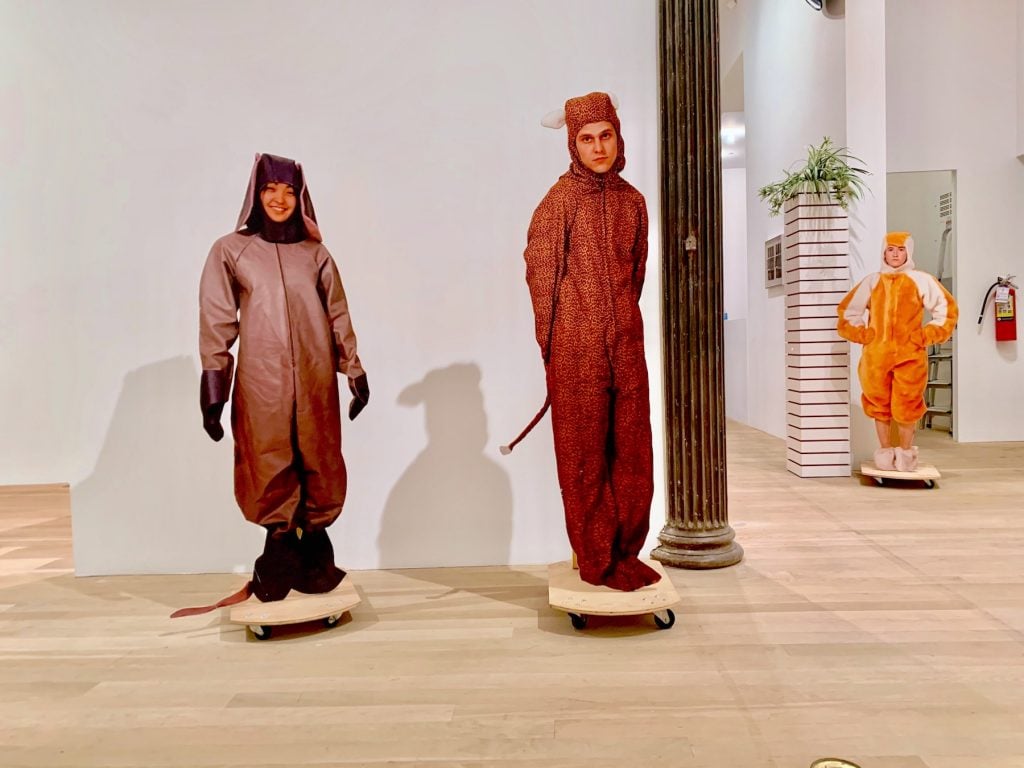
Installation view of “Animal Costume Cutouts” (1993) in “ART CLUB2000: Selected Works 1992-1999 at Artists Space. (Photo by Ben Davis.)
The other elements of “Commingle” were a bunch of slightly below life-sized cardboard cutouts of the various members, looking mischievous and clad in the animal costumes. And then a bunch of material related to the Gap: planters, bits of slatwall, and mirrors scavenged from the trash; a wonky tower made of Gap boxes; bland corporate directives from the training manual stenciled in vinyl lettering on the gallery walls, plus blown up black-and-white photos highlighting details of the same documents.
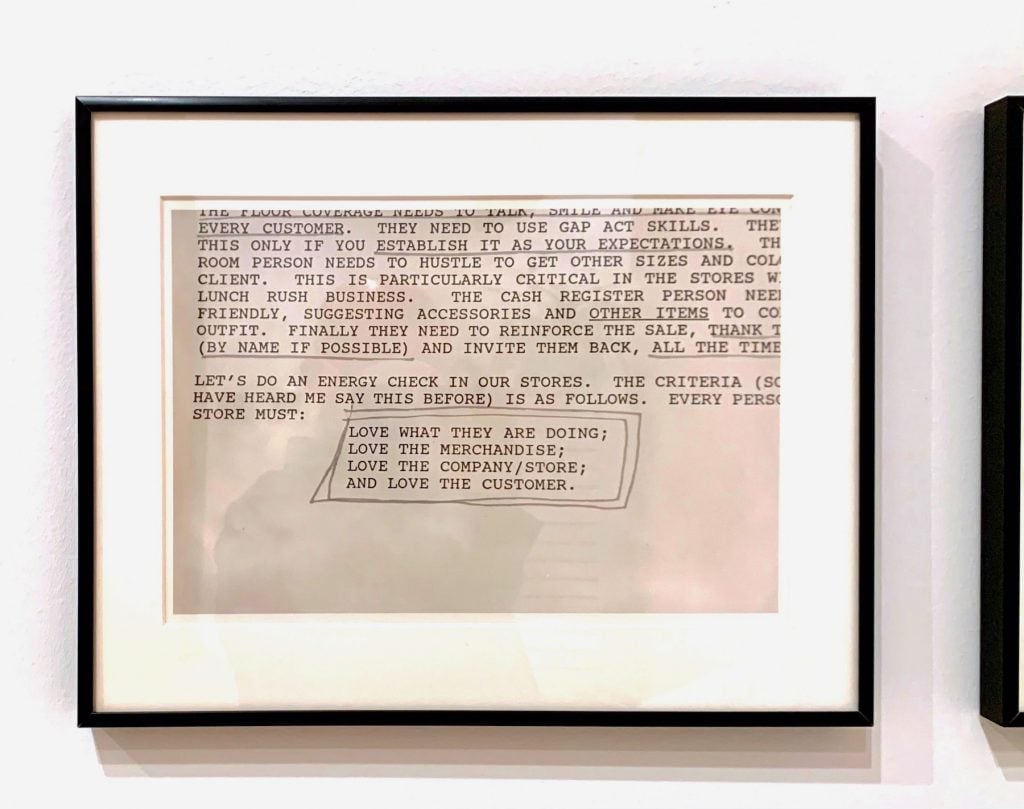
ART CLUB2000, Untitled (1993). (Photo by Ben Davis.)
Why the Gap? The idea of the doughty normcore fashion retailer as a target feels “very ‘90s” now. Its relevance was extremely specific to the immediate time-and-place of ART CLUB2000 as an initiative sprung form the Cooper Union/American Fine Arts nexus.
The Gap had just opened a branch on St. Marks, signaling an end of a grittier downtown era. Meanwhile, the brand was busy transmuting its anti-cool into cool via an “Individuals of Style” marketing campaign, which featured various creatives, from Spike Lee to Joan Didion to art dealer Leo Castelli, wearing Gap.
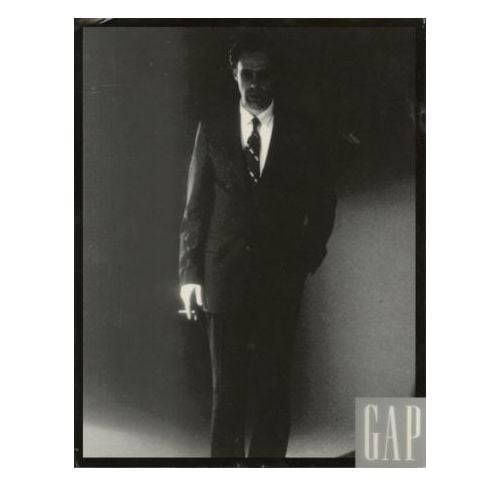
Photo of art dealer Colin de Land copying the style of the Gap’s “Individuals of Style” campaign. (Photo courtesy Artists Space.)
The “Commingle” show had a photography set-up where you could recreate your own “Individuals of Style”-esque photo (lamentably not available for use at Artists Space). An ad that ART CLUB2000 placed in Artforum to tout the exhibition, aping the campaign but starring Colin de Land draped in shadows, earned them a stern 1993 letter from Gap Corp., proudly displayed in a vitrine of Art Club-related documents at Artists Space.
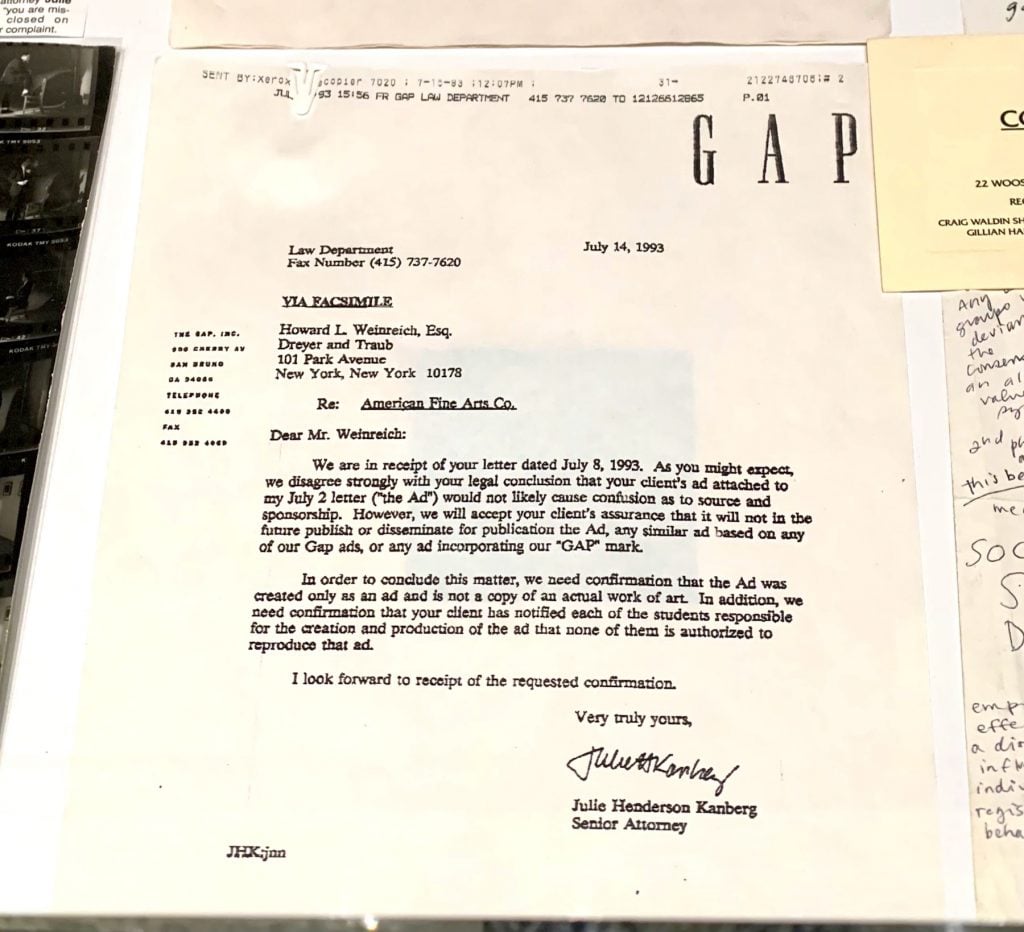
Letter from Gap Corp., displayed in “ART CLUB2000: Selected Works 1992-1999 at Artists Space. (Photo by Ben Davis.)
The upshot was that as much as their debut cast them as “generational spokesmodels,” the show was also a cynical joke about rebel style being marketed as herd taste—which is a very early-‘90s, Gen X kind of posture to take, in the era of The Simpsons and Nirvana.
Once, when asked who the most stylish woman in the world was, the fashion designer Hedi Slimane replied, “Some unknown girl on the dance floor.” The fashionable is in some ways an empty signifier, which the culture industries fill in using whatever images of youth and newness and novelty are handy, rotating the crops of commodified desire.
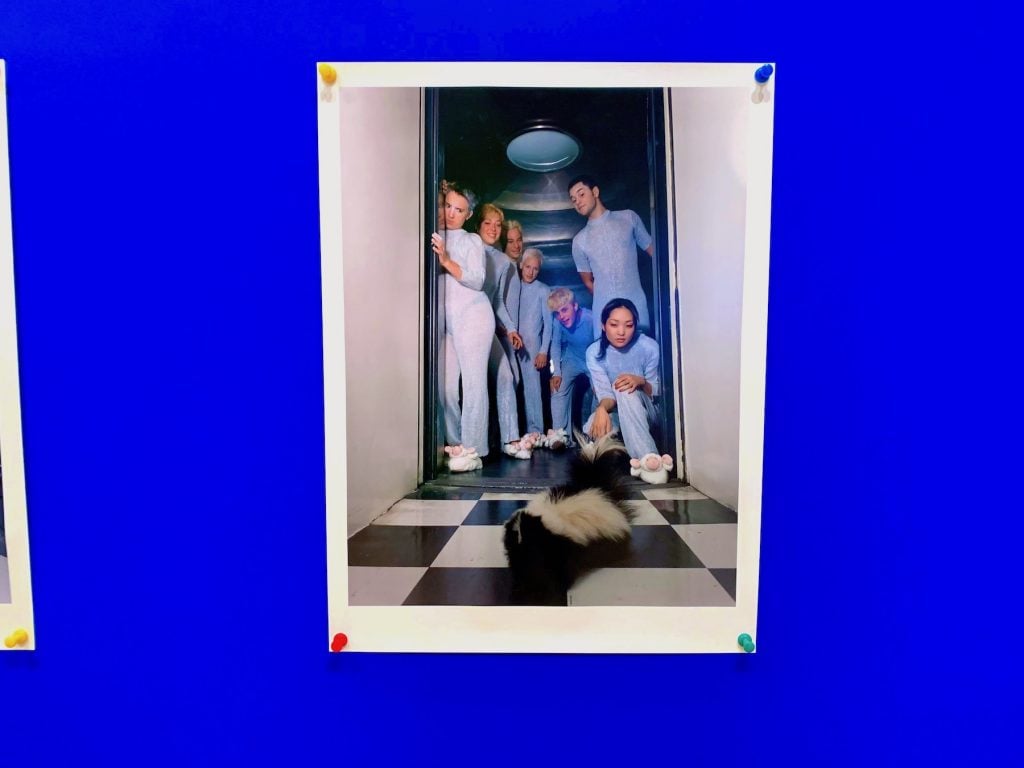
ART CLUB2000, Untitled (Cooper Union/Skunk (1994). (Photo by Ben Davis.)
And so the ART CLUB2000 strategy of claiming the role of “hot new thing” with self-conscious irony also comes with the curse of understanding the arbitrariness of the role and hence its fleetingness. There’s a fuse burning on this kind of glamour—one flagged right in the name of the group, ART CLUB2000, destined to date it if they lasted much beyond the millennium.
Thus, what followed “Commingle” was something like the group testing the limits of the game that they had created for themselves, see-sawing between playful roleplay as art stars and much more earnest gestures investigating the mechanisms of the New York art world that had created them.
For “Kaputtmachen im graz,” in 1994, they presented a wall mural featuring themselves as dead-eyed rock stars who’d trashed their hotel room.
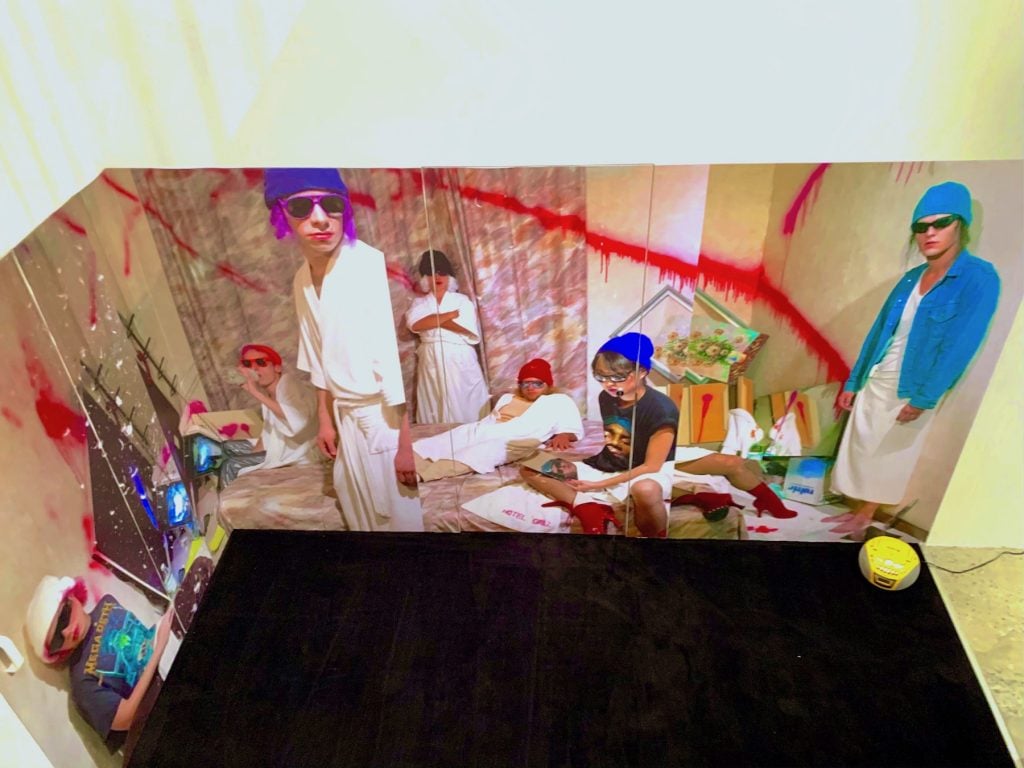
Installation view of ART CLUB2000, Kaputtmachen im Graz (1994). (Photo by Ben Davis.)
For “SoHo So Long,” in 1996, on the other hand, they did a kind of sociological interview series and portraits of the cadre of young art dealers then being priced out of the increasingly Gap-ified SoHo for Chelsea.
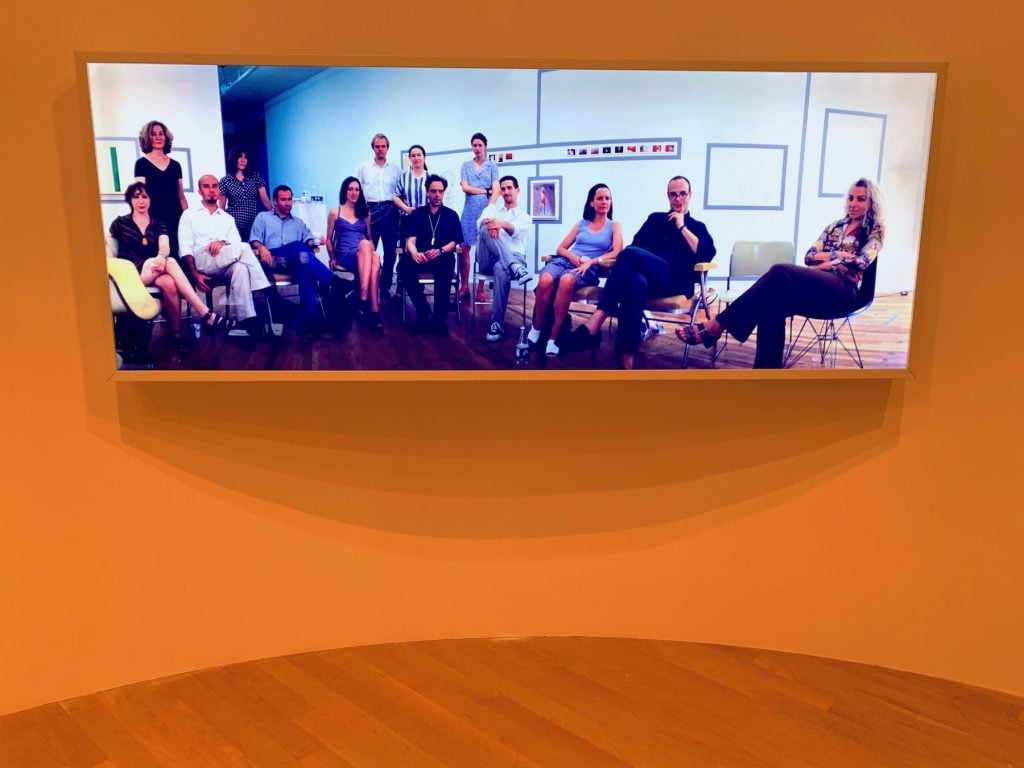
ART CLUB2000, Untitled (Dealers in a Round Table Dialogue, July 18, 1996 (1996). Photo by Ben Davis.
For a show called “1970” in 1997 they did a series of interviews with stars from the vanished ‘70s glory days of New York art, including Carolee Schneemann and Vito Acconci, presented as a video sculpture.
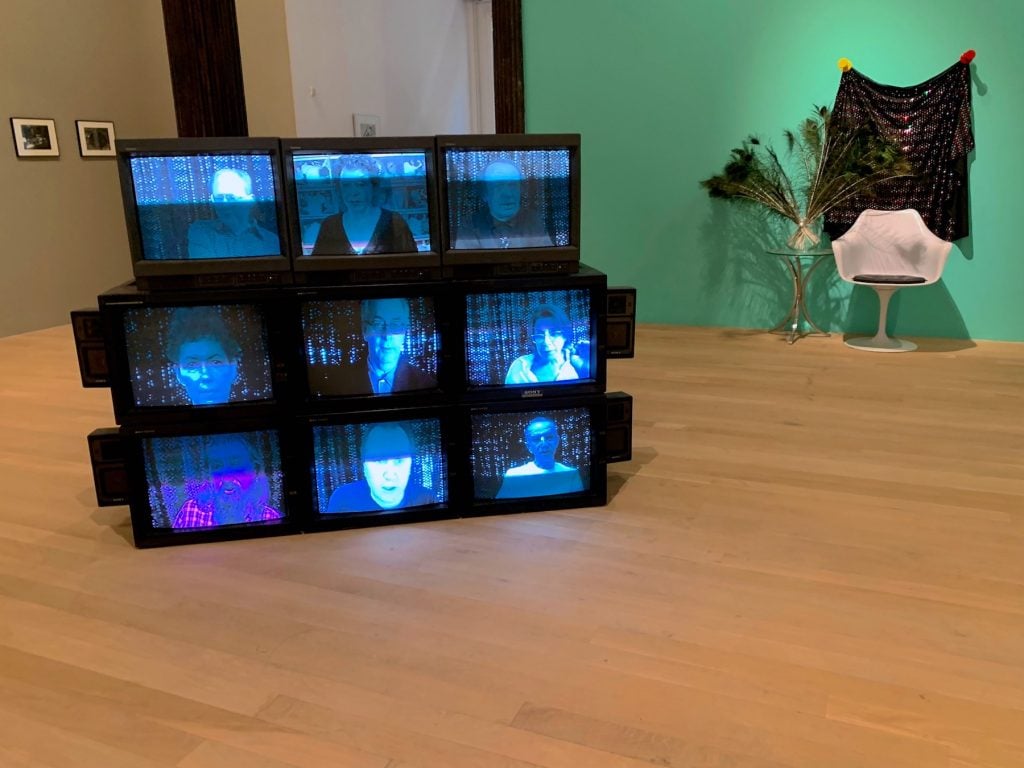
ART CLUB2000, Untitled (Video Interviews with Artists on the Year 1970) (1997) and Untitled (TVs Studio) (1997). Photo by Ben Davis.
Both these latter projects, in their different ways, reflect an impulse to put into perspective the slippery conditions of their own fame as bound by a moment and a place.
For a 1998 show with the clunky title “Night of the Living Dead Author,” ART CLUB2000 offered an art-theory-themed haunted house. It included Untitled (Statements Regarding the Death of the Author), a red LED sign of the kind you see advertising lotto tickets in a bodega. If you stuck around to unpack the scrolling text, it lambasted ‘90s artists—including Matthew Barney, Vanessa Beecroft, and ART CLUB2000 itself—for failing to rise to the level of political seriousness and being merely content to riff uncritically on mass culture: “a vast number of artists build careers out of a facet of a predetermined culture,” etc.
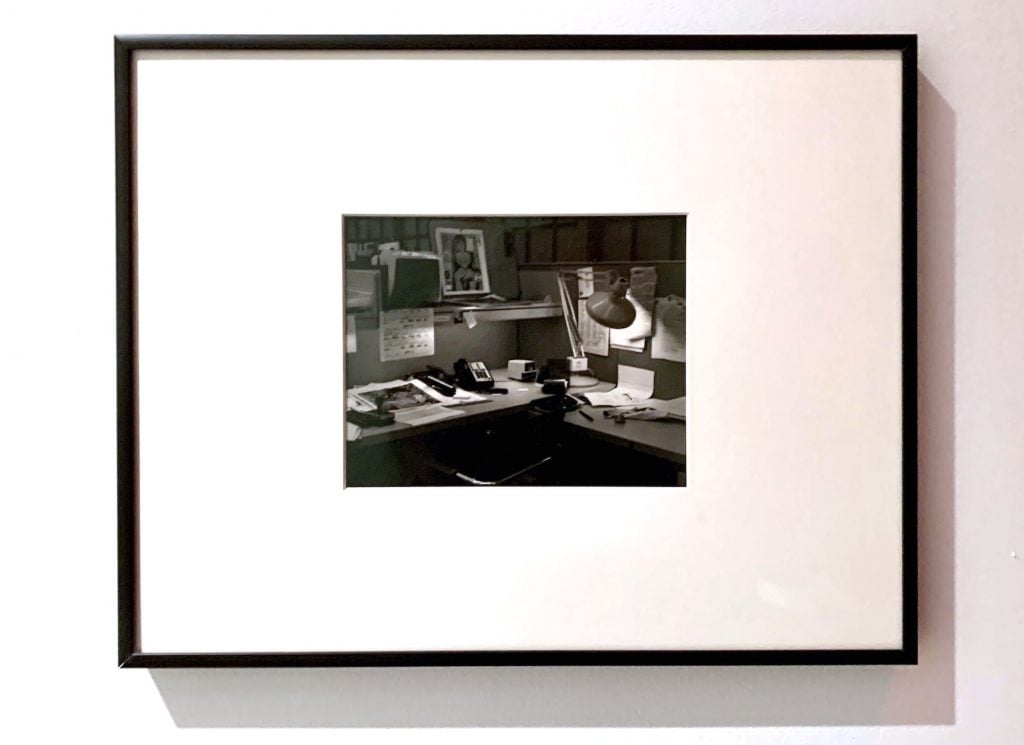
ART CLUB2000, from the “Working!” series. Photo by Ben Davis.
Perhaps the most poignant of ART CLUB2000’s post-“Commingle” works, from ‘95, is a series of un-aesthetic black-and-white photos, each one depicting the empty setting where one of the members held down a day job. It’s a catalogue of the hustling underside of New York creative culture, working in bars, as art handlers, in costume shops, and at editorial internships.
Even if this imagery was its own kind of emerging generational cliché a la Reality Bites and Clerks, these photos make a particular point here as windows into drab and atomized work-life experiences set off against their colorful, fusional invented identity. They stand in for the uneven rhythms and trajectories of different life paths calling.
The group would last until 1999 before going inactive and scattering its members, concluding with an act of self-homage, “1999 (A Retrodisrespective),” represented here by a large, jokey grim reaper figure.
“Colin tried to teach us how art ‘works,’ and the continuing life of what we made with him, and the surrounding conversations, often proved more interesting than the work itself,” two former ART CLUBBERS, McDonald and Beckwith, recalled in a 2013 Artforum interview with David Velasco. There’s something more than modesty to that statement.
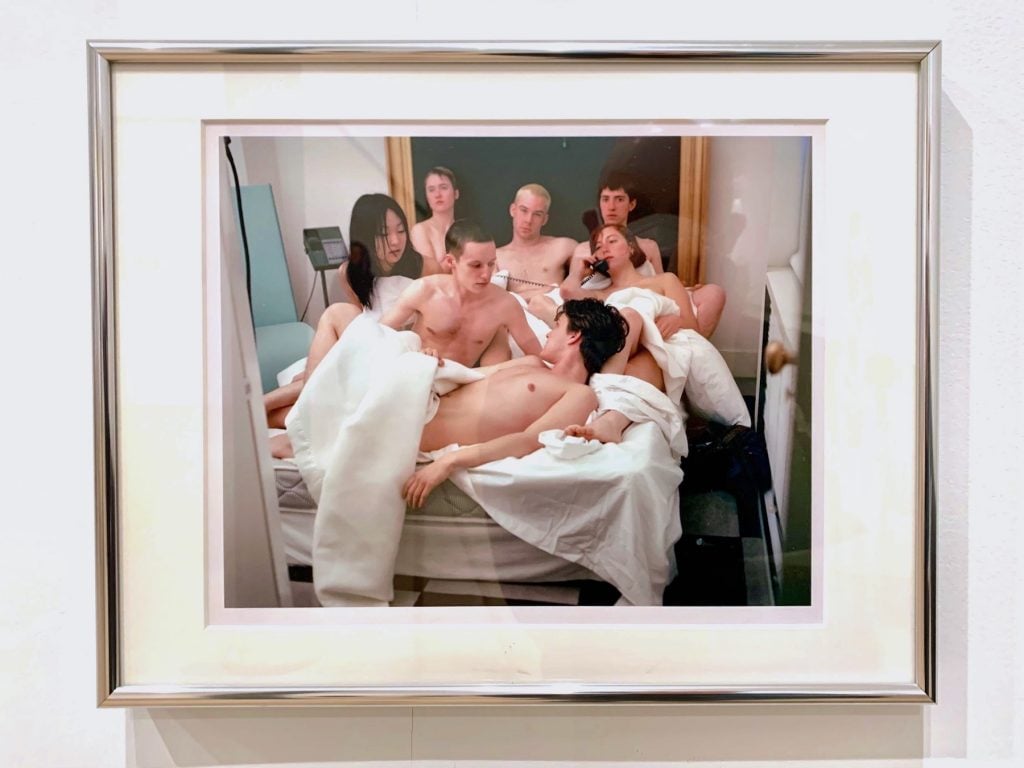
ART CLUB2000, Untitled (Paramount/Nude) (1992-93). Photo by Ben Davis.
De Land insisted that the early, untitled group photos be printed small, to keep them from overpowering the reception of the group—which they did anyway. In 2020, however, the fact that they are printed at intimate size gives them a kind of poignancy. When you see them in person, it’s as if they are about how large the moment felt versus how fleeting it was.
A lot of the other objects here feel knowingly arbitrary or like inside jokes very specifically fitted to the intellectual terrain of a certain moment. That does mean that a lot of the show may be more a time capsule than a cluster of lasting art objects.
But it’s not just fuel for the ‘90s nostalgia machine either. ART CLUB2000’s particular constructed group identity—the art-collective-as-“pose band,” as Beckwith put it—is an influential and lovable construction on its own. And when Beckwith and McDonald say that “the surrounding conversations often proved more interesting than the work itself”—that interest shines through, the atmosphere of hothoused angst, experimentation, and group communion.
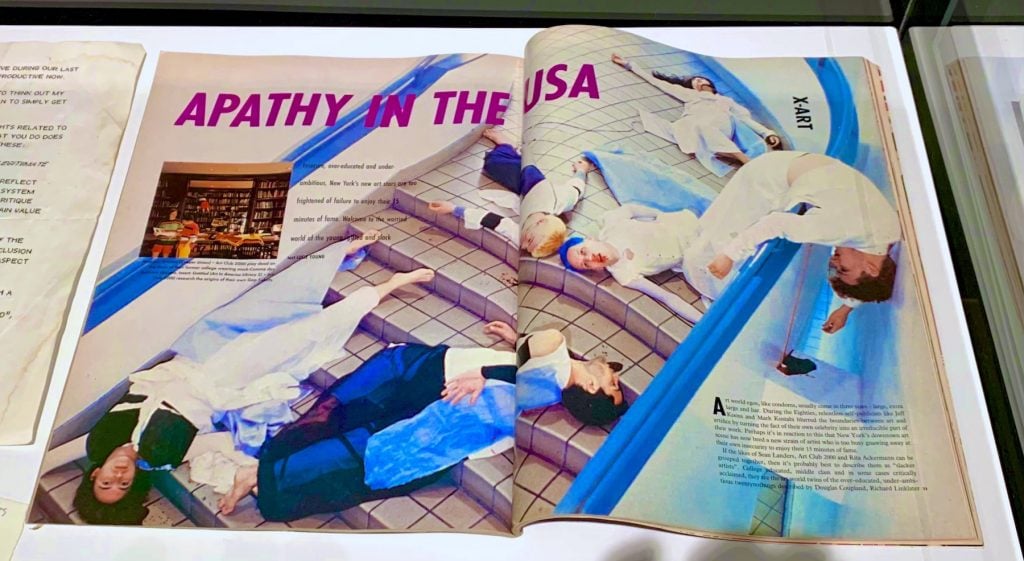
A magazine from ART CLUB2000 in Installation view of “Animal Costume in “ART CLUB2000: Selected Works 1992-1999 at Artists Space. Photo by Ben Davis.
They weren’t the first or the last to claim an invented group persona. But the faux-packaged youth identity they assumed does make the particular point, sometimes glossed over by more astringent forms of media critique, that even if you have a fully demystified awareness that commodified pop culture is degraded and fabricated, you can’t help investing it with real desires and fantasies, because it provides one of the default mediums through which you communicate with contemporaries and peers.
Finally—and this may be an observation particularly thrown into relief by my own specific time and place, and the dynamics of quarantine-era isolation—the show makes me think of how the social life around art is part of what makes it worthwhile. It’s not all art is or the most noble thing about it, and it is the most doomed-to-vanish and impossible-to-share. But ART CLUB2000‘s fantasy of invented collective identity preserves the sense of art as being a club you would like to belong to, and that’s not something you can say for every art show.
“ART CLUB2000: Selected Works 1992–1999″ is on view at Artists Space, through January 30, 2021.
See more photos from “ART CLUB2000: Selected Works 1992–1999,” below:
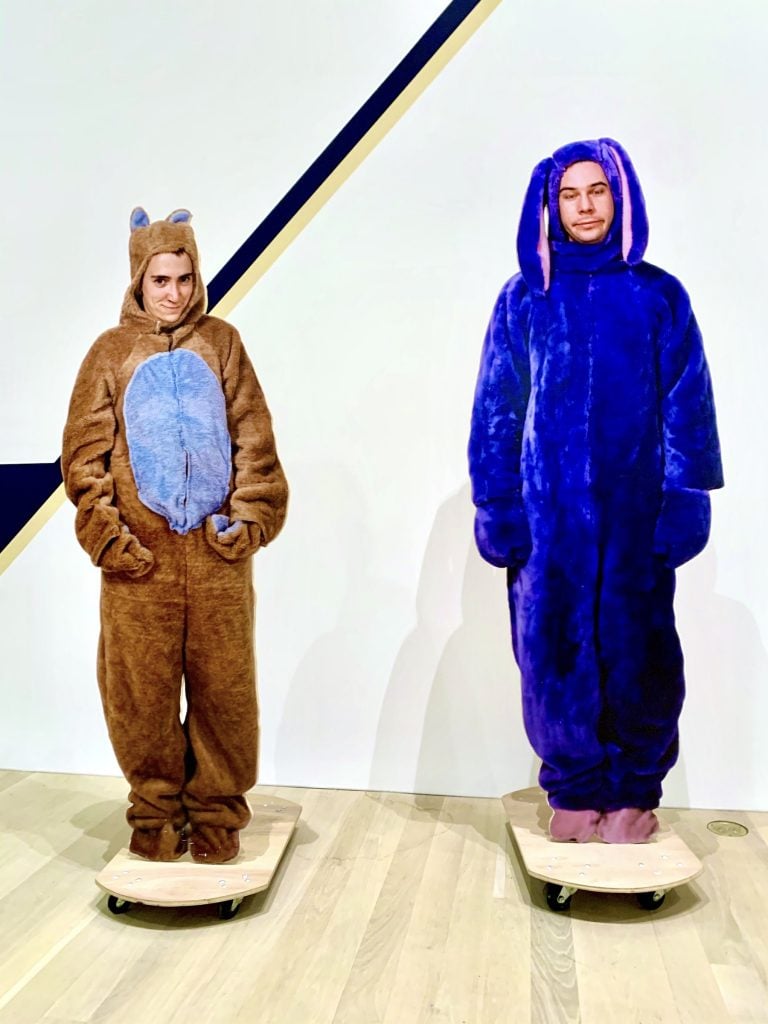
Installation view of “Animal Costume Cutouts” (1993) in “ART CLUB2000: Selected Works 1992-1999 at Artists Space. (Photo by Ben Davis.)
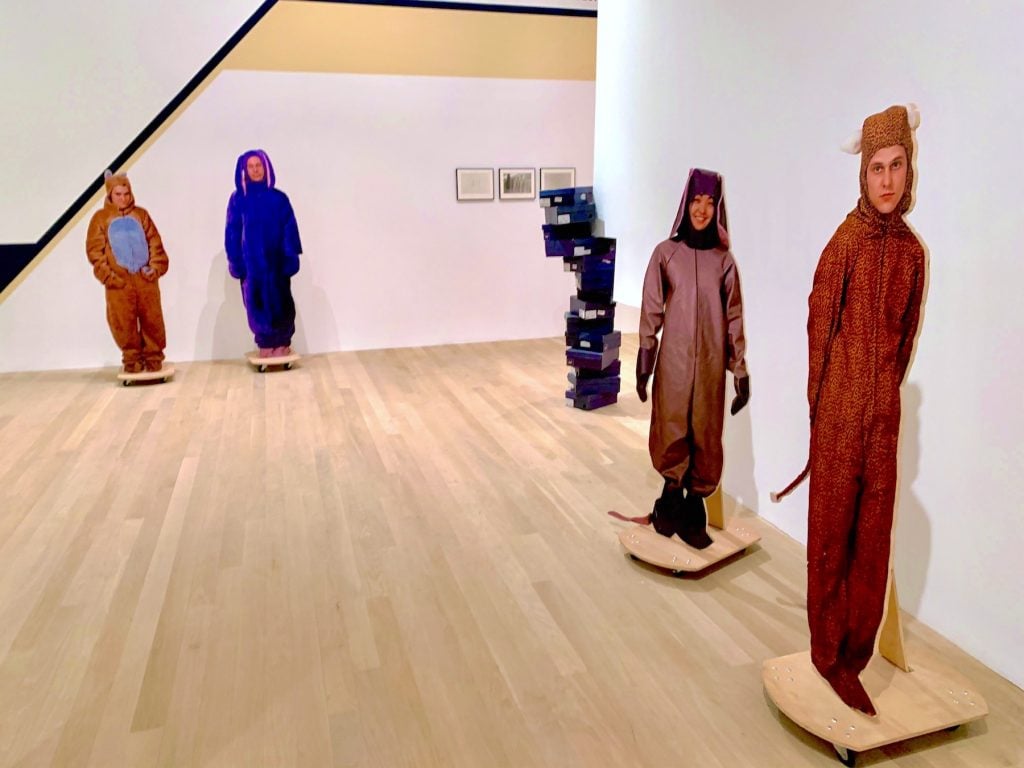
Installation view of “Animal Costume Cutouts” (1993) in “ART CLUB2000: Selected Works 1992-1999 at Artists Space. (Photo by Ben Davis.)
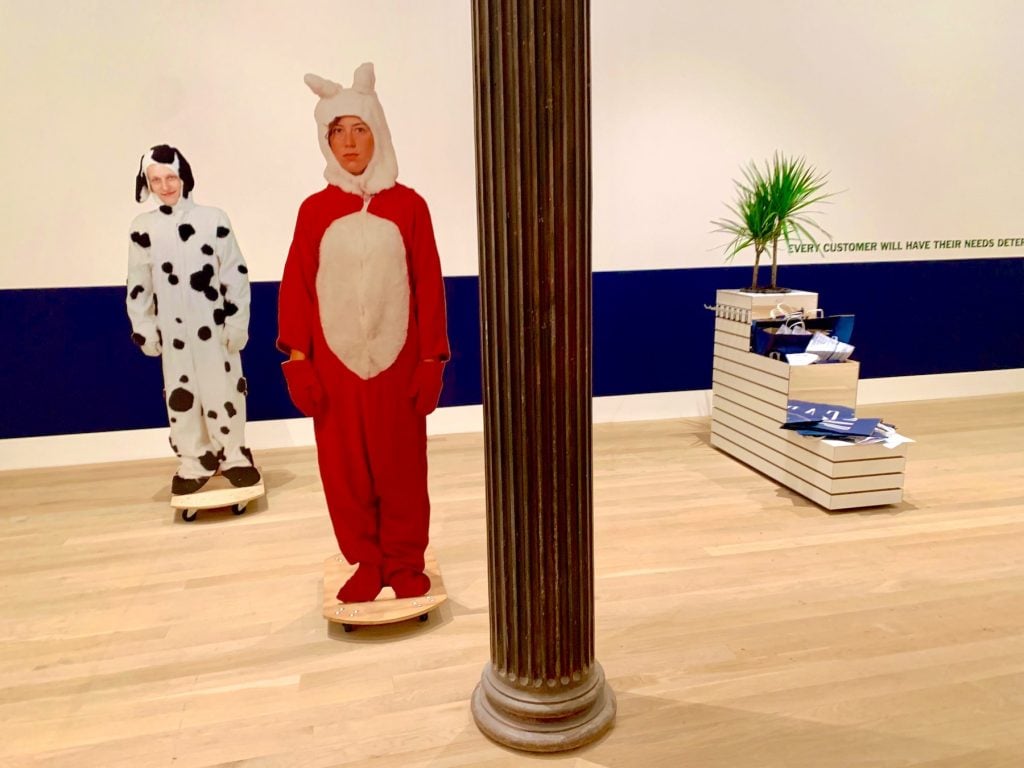
Installation view of “Animal Costume Cutouts” (1993) in “ART CLUB2000: Selected Works 1992-1999 at Artists Space. (Photo by Ben Davis.)
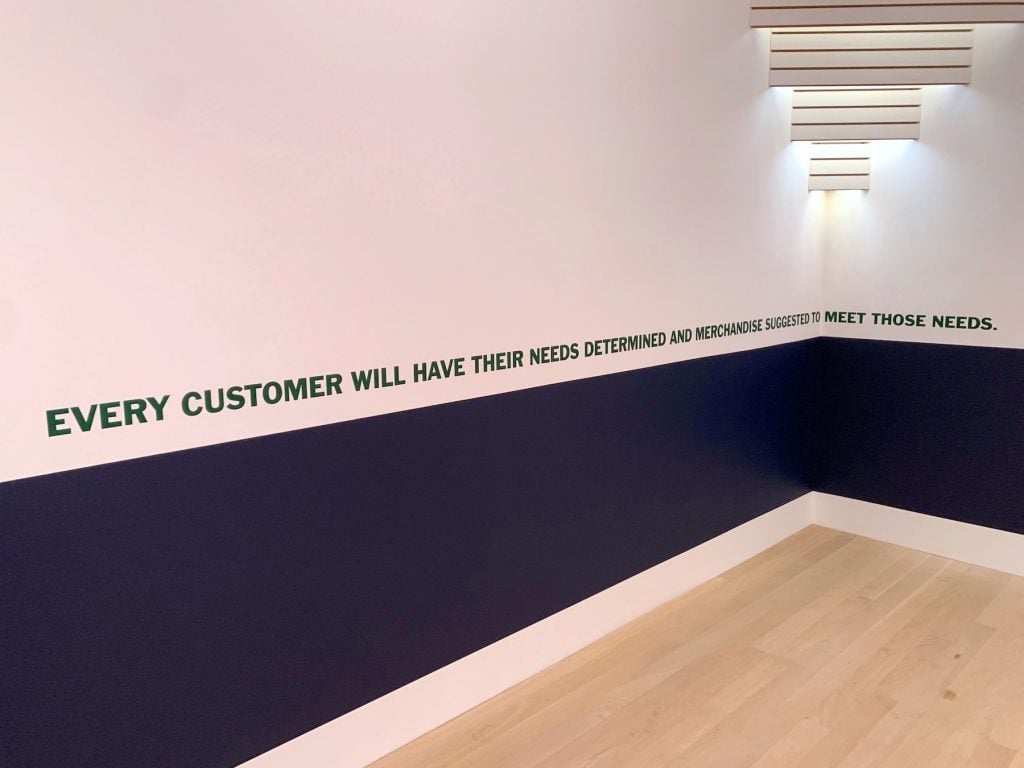
ART CLUB2000, From Gap Customer Service Standards (1993). (Photo by Ben Davis.)
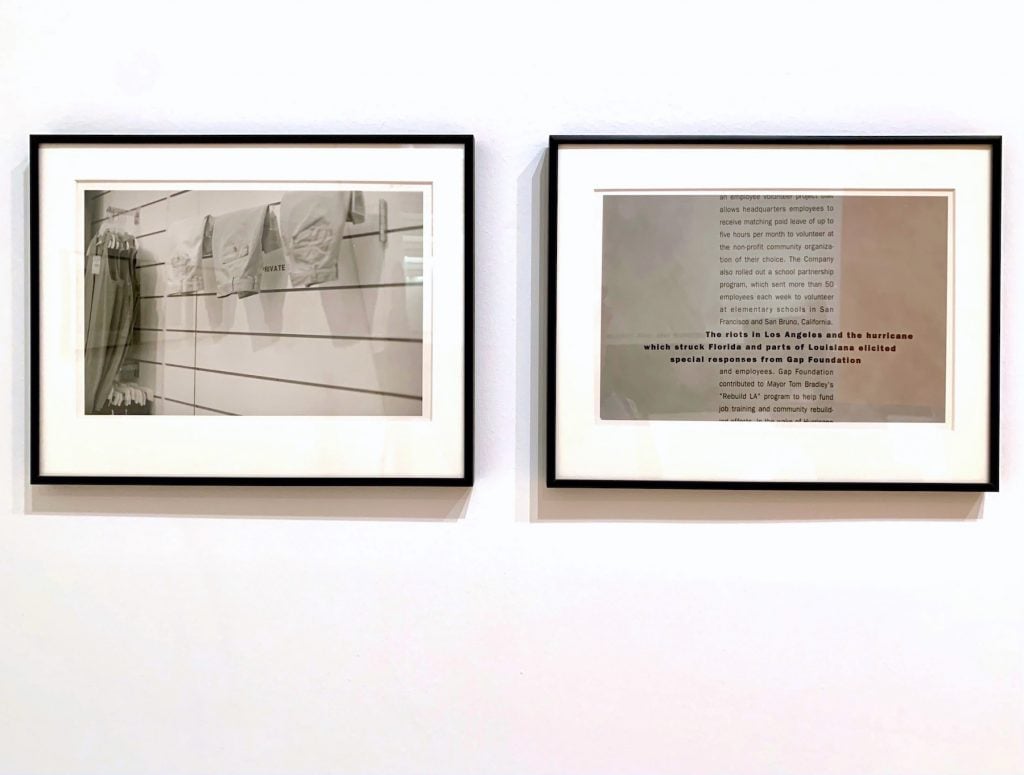
ART CLUB2000, Untitled (1993). (Photo by Ben Davis.)
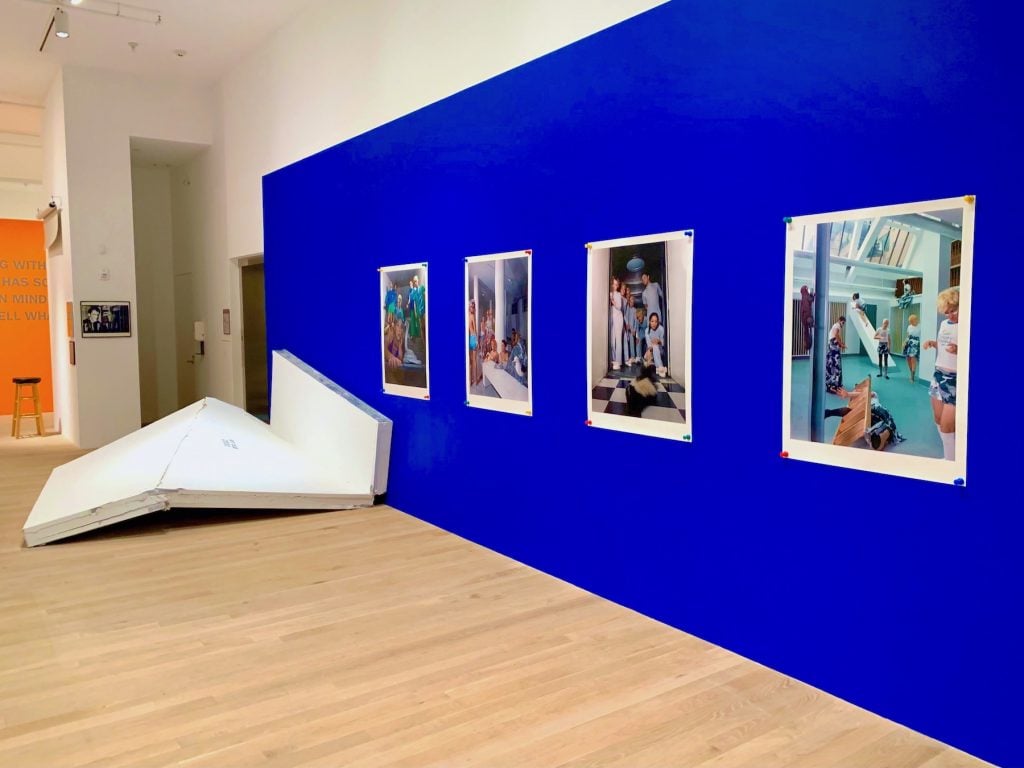
Installation view of “ART CLUB2000: Selected Works 1992-1999″ at Artists Space. (Photo by Ben Davis.)
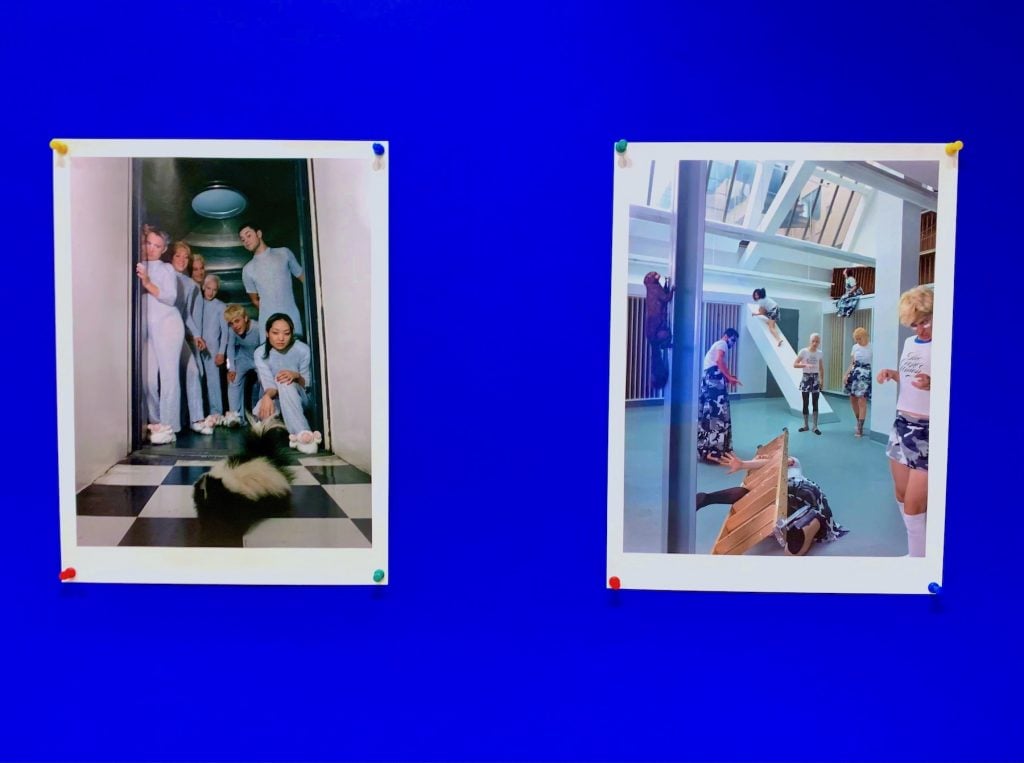
ART CLUB2000, Untitled (Cooper Union/Skunk and Untitled (Cooper Union/Squirrel (both 1994). (Photo by Ben Davis.)
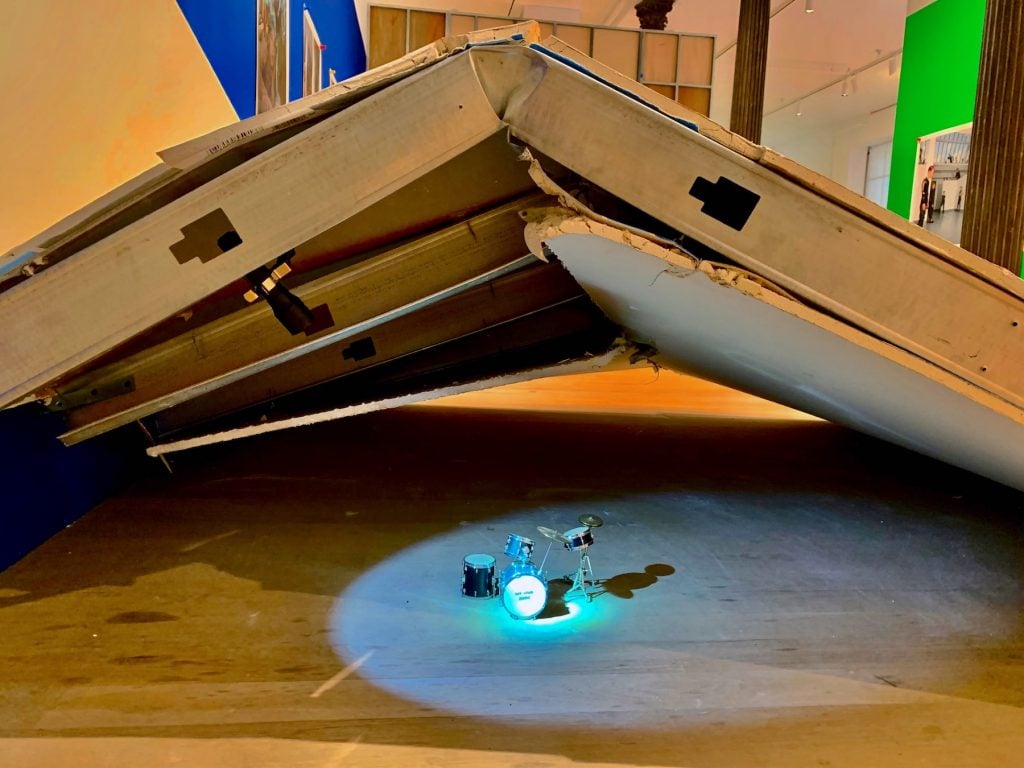
ART CLUB2000, Untitled (Drum Kit) (1994). (Photo by Ben Davis.)
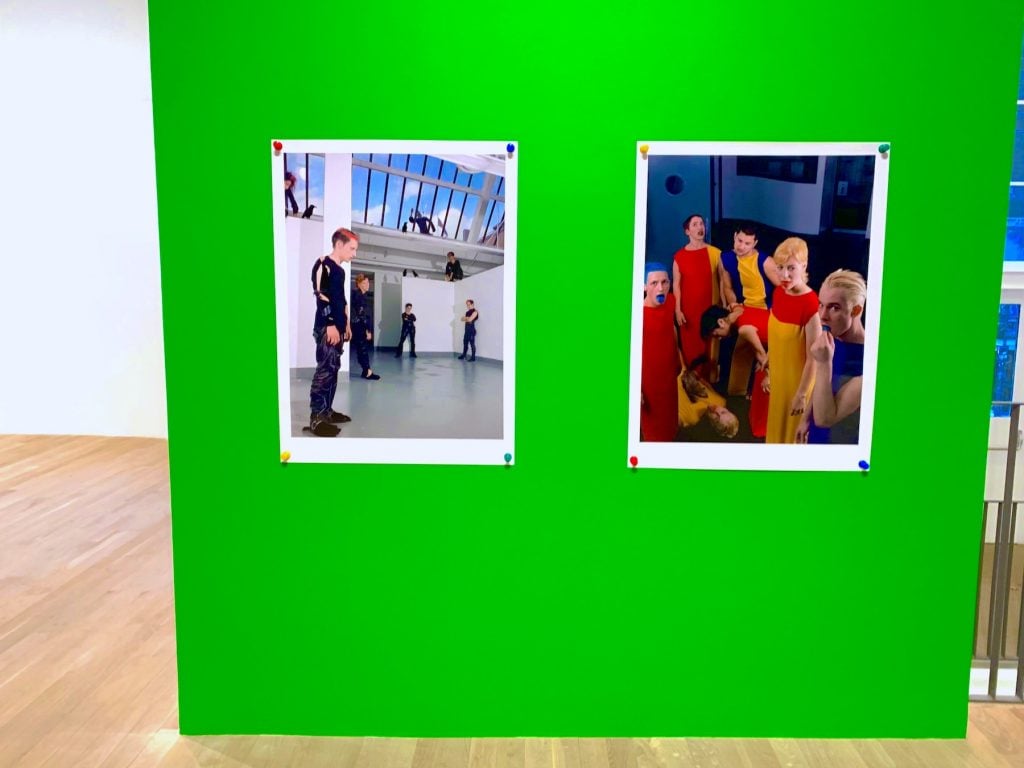
ART CLUB2000, Untitled (Cooper Union/Crow) and Untitled (Cooper Union/Weasel) (both 1994). (Photo by Ben Davis.)
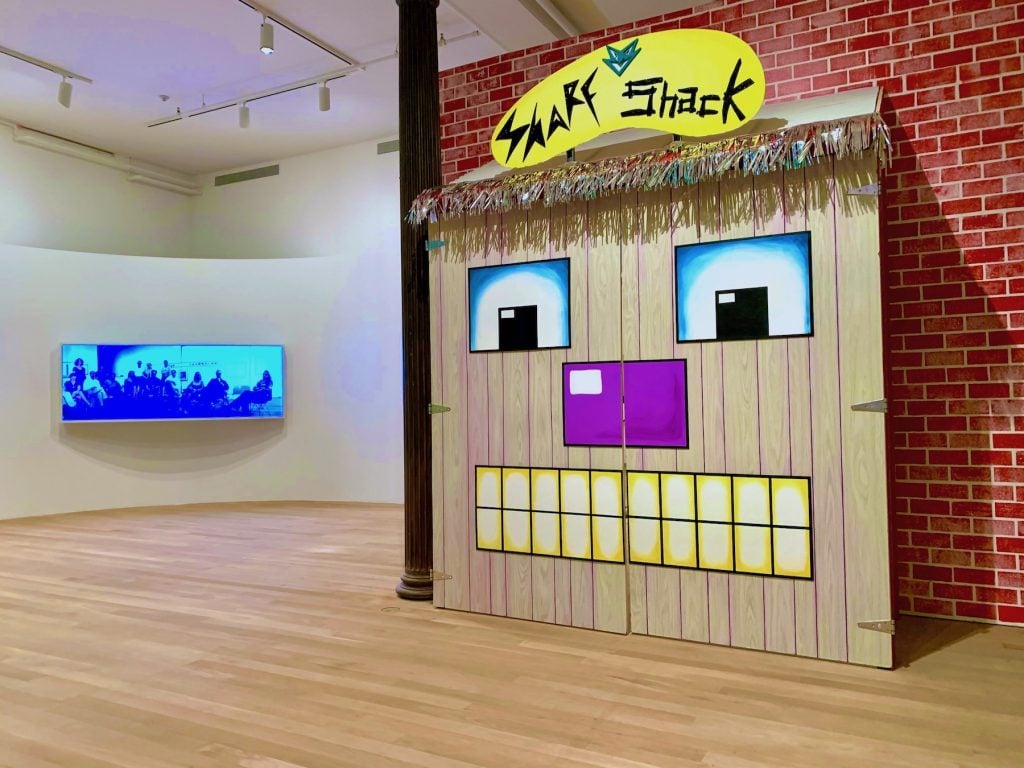
ART CLUB2000, Untitled (Scharf Shack) after Kenny Scharf’s Scharf Shack (1998). (Photo by Ben Davis.)
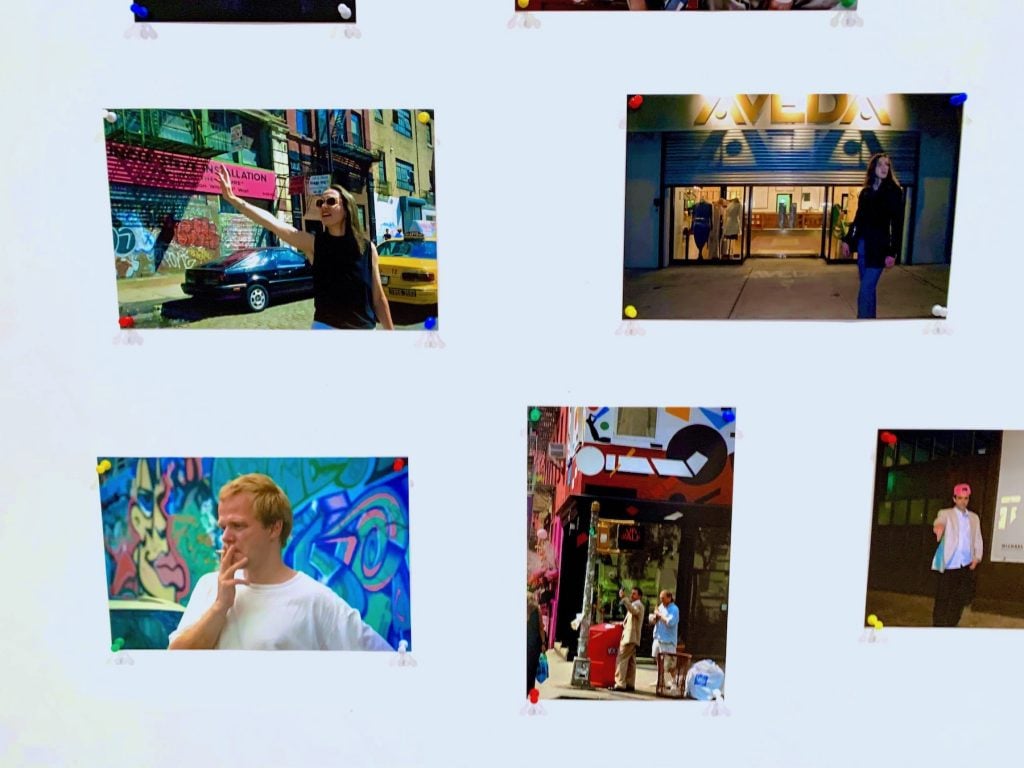
ART CLUB2000, Untitled (Portraits of respondents) (1995). (Photo by Ben Davis.)
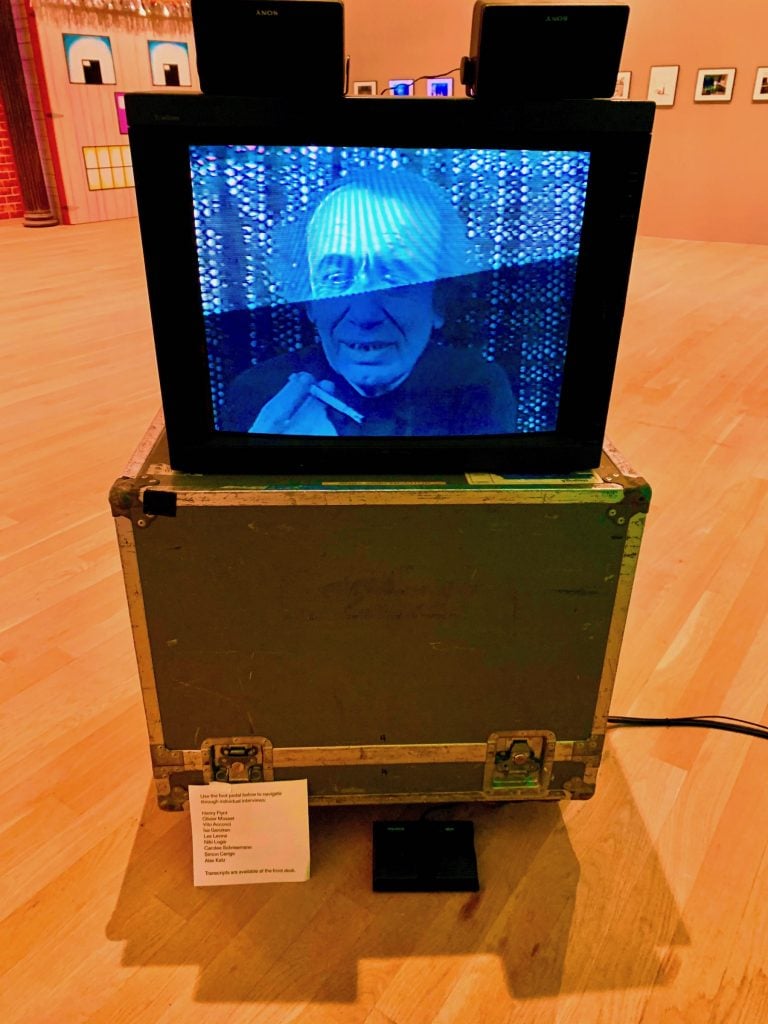
ART CLUB2000, Untitled (Individual Viewing Station for Interviews With Artists on the Year 1970 (1997). (Photo by Ben Davis.)
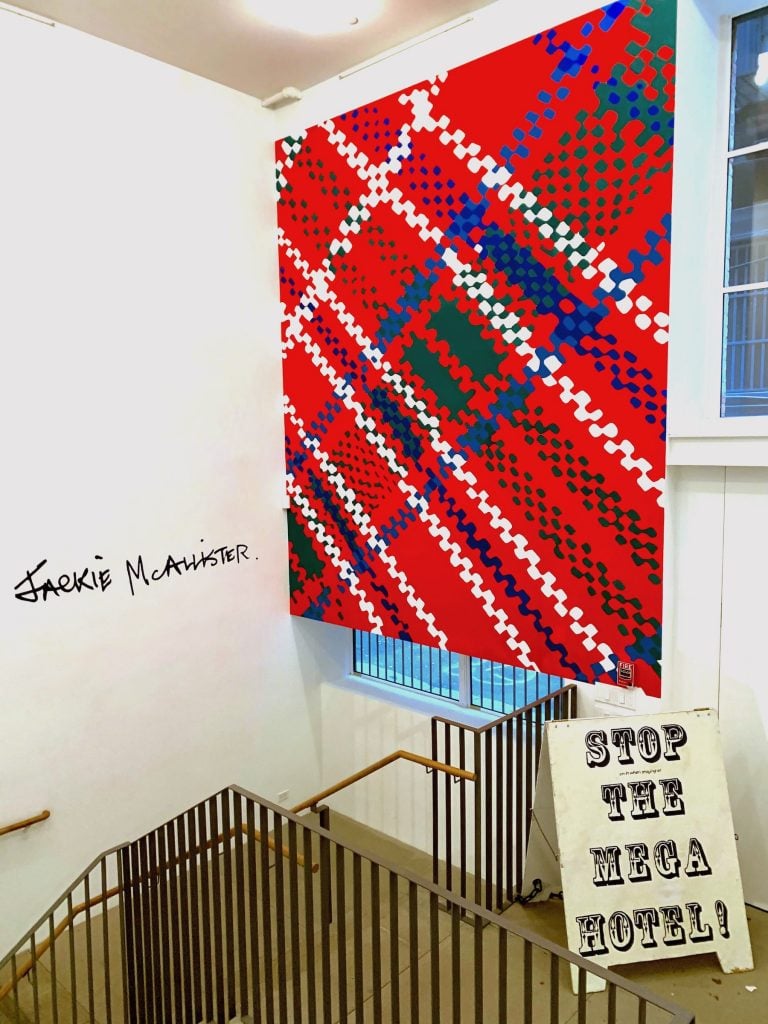
ART CLUB2000, Signature Painting (1995), MacAlister Tartan (1995) and Espirit d’Amusement (1994). (Photo by Ben Davis.)

Installation view of ART CLUB2000, Kaputtmachen im Graz (1994). (Photo by Ben Davis.)
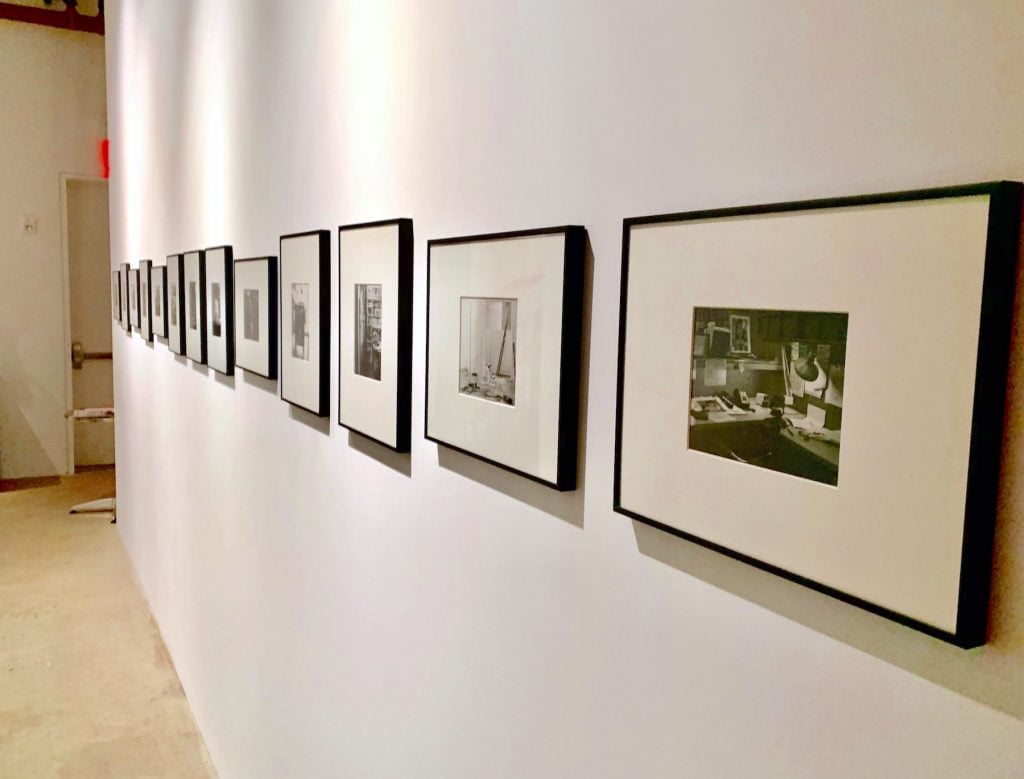
Installation view of ART CLUB2000‘s “Working!” series at Artists Space. (Photo by Ben Davis.)
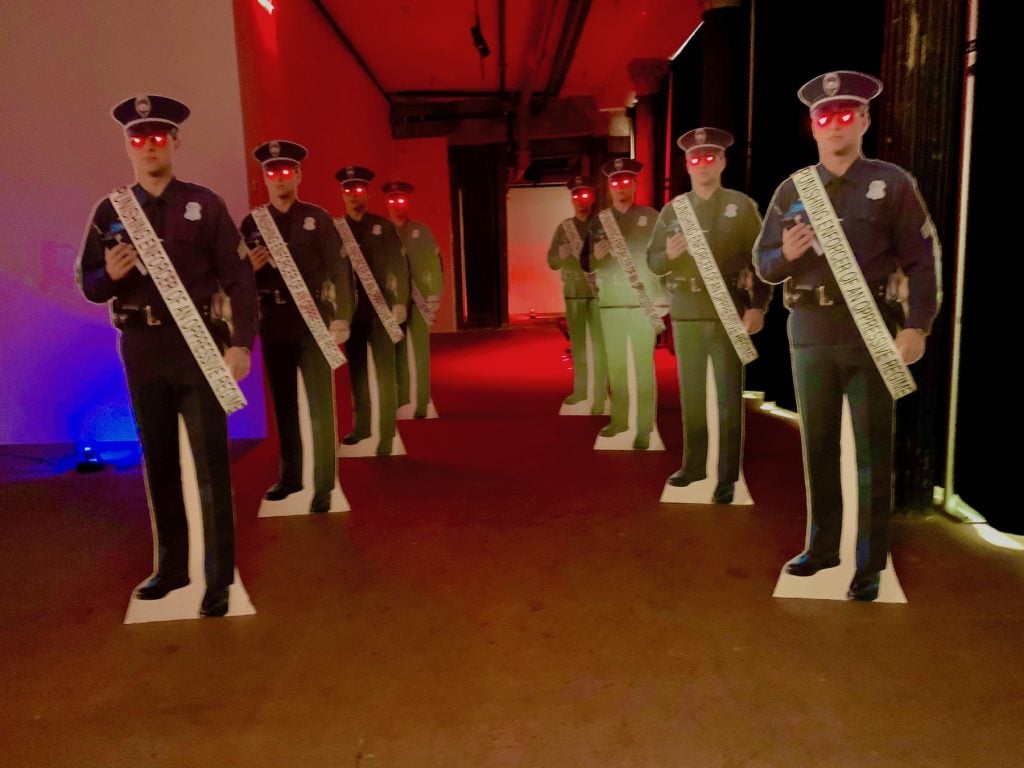
ART CLUB2000, Untitled (Punishing Enforcers of an Oppressive Regime) (1998). (Photo by Ben Davis.)
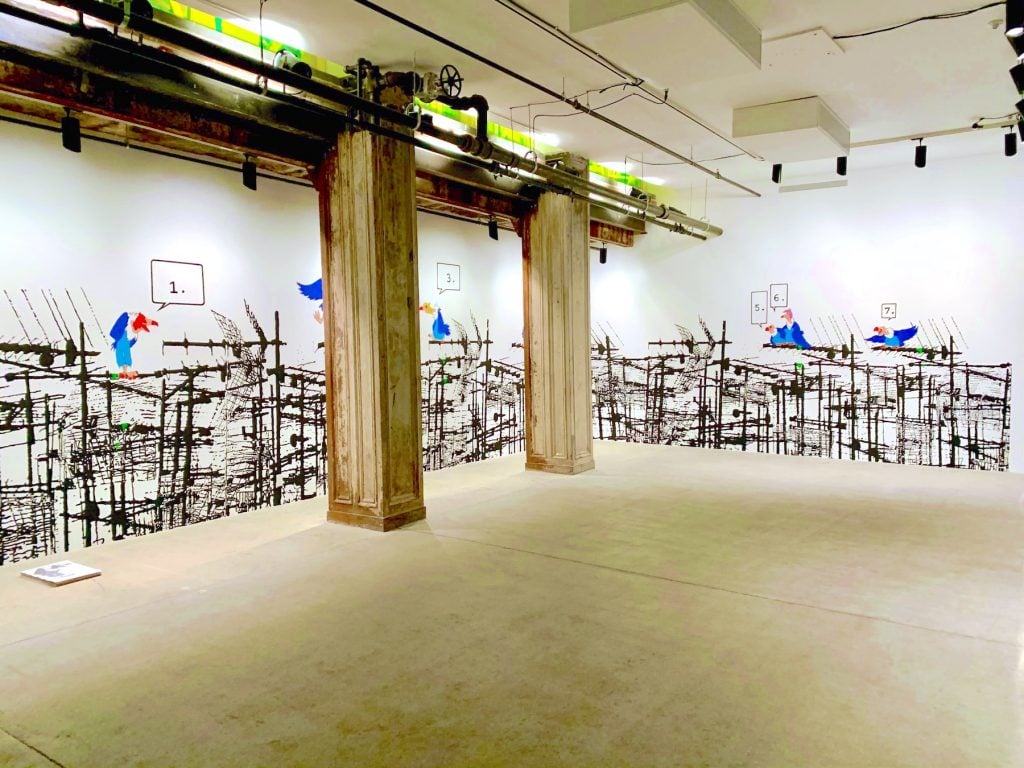
Installation view of ART CLUB2000, Gli Avvoltoi (The Vultures) (1995). (Photo by Ben Davis.)
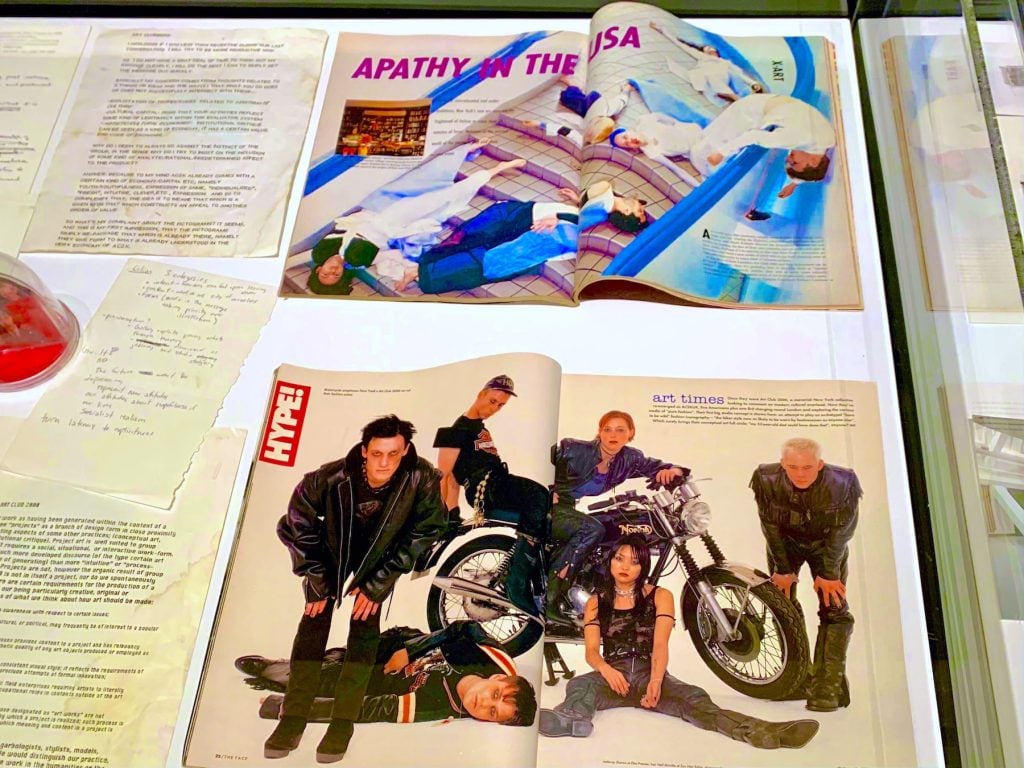
Paraphernalia from the ART CLUB2000 in Installation view of “Animal Costume in “ART CLUB2000: Selected Works 1992-1999″ at Artists Space. (Photo by Ben Davis.)
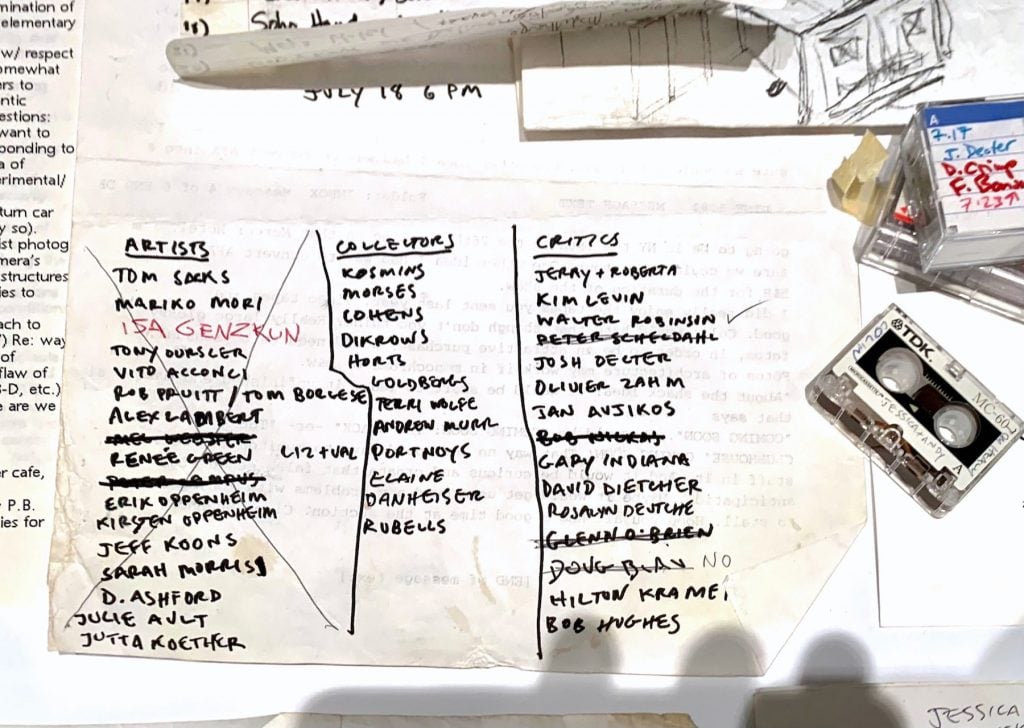
Paraphernalia from the ART CLUB2000 in Installation view of “Animal Costume in “ART CLUB2000: Selected Works 1992-1999″ at Artists Space. (Photo by Ben Davis.)
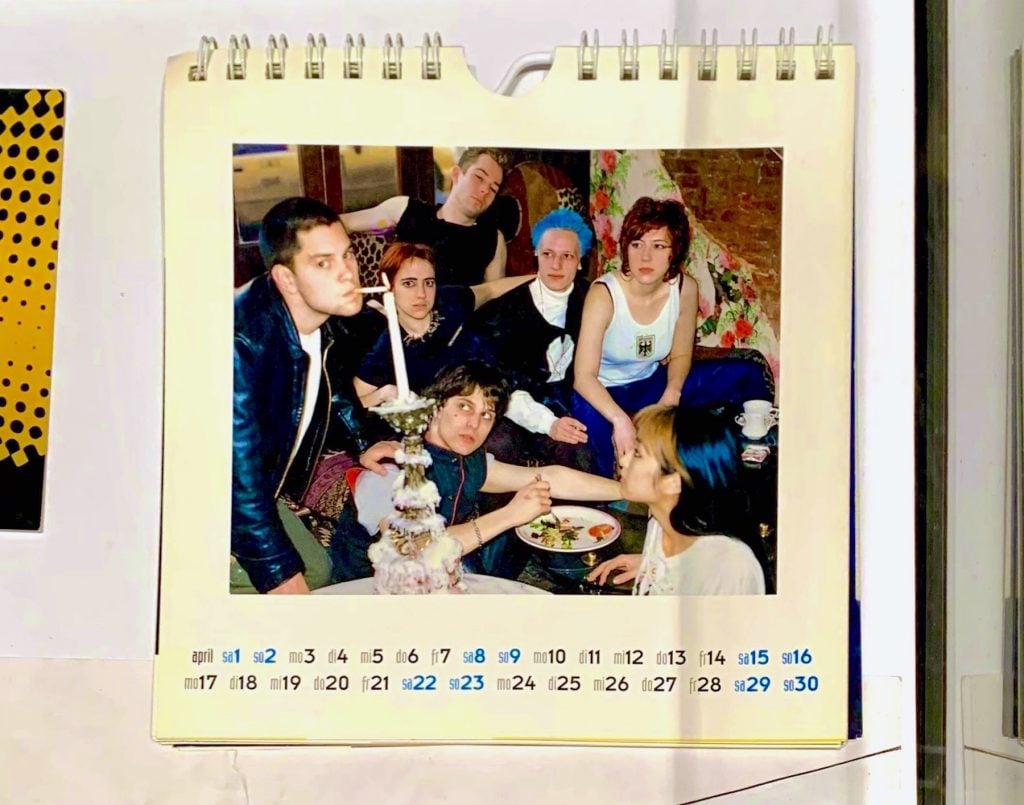
Paraphernalia from the ART CLUB2000 in Installation view of “Animal Costume in “ART CLUB2000: Selected Works 1992-1999 at Artists Space. (Photo by Ben Davis.)
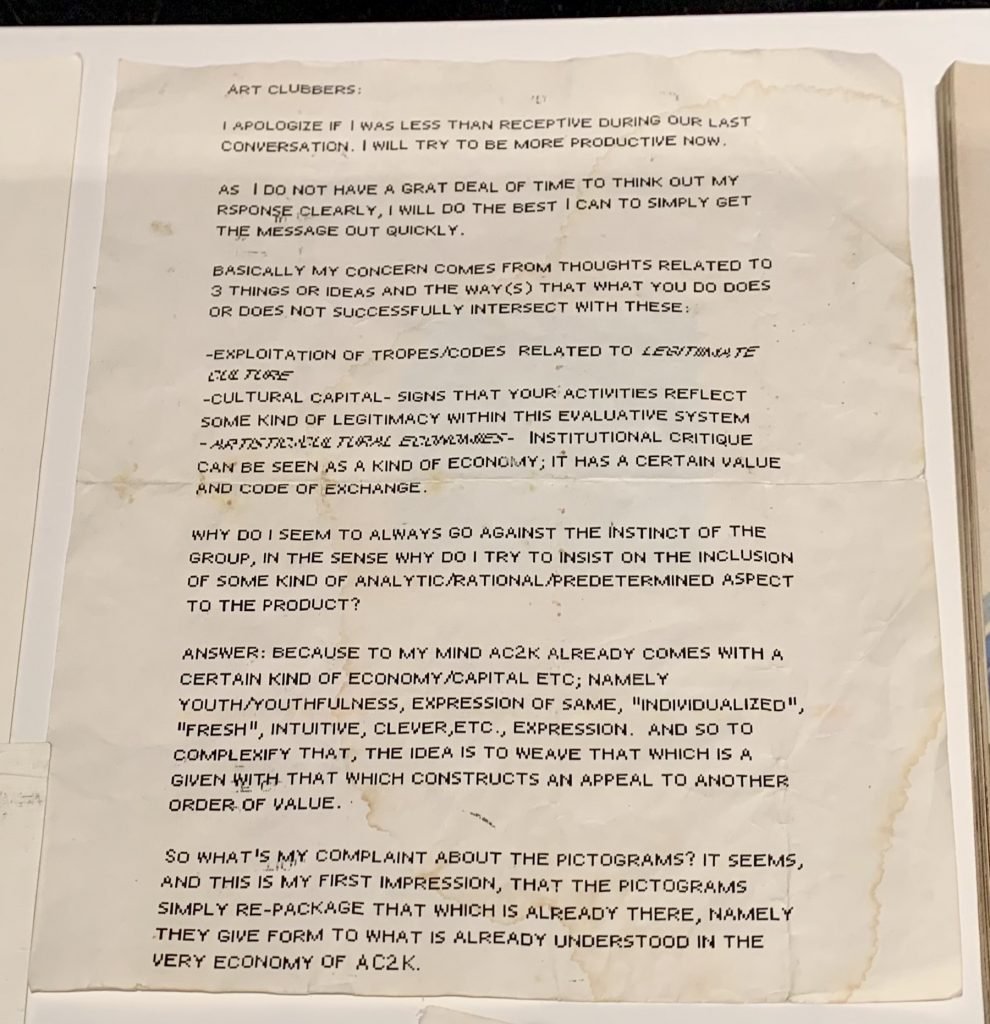
Paraphernalia from the ART CLUB2000 in Installation view of “Animal Costume in “ART CLUB2000: Selected Works 1992-1999 at Artists Space. (Photo by Ben Davis.)
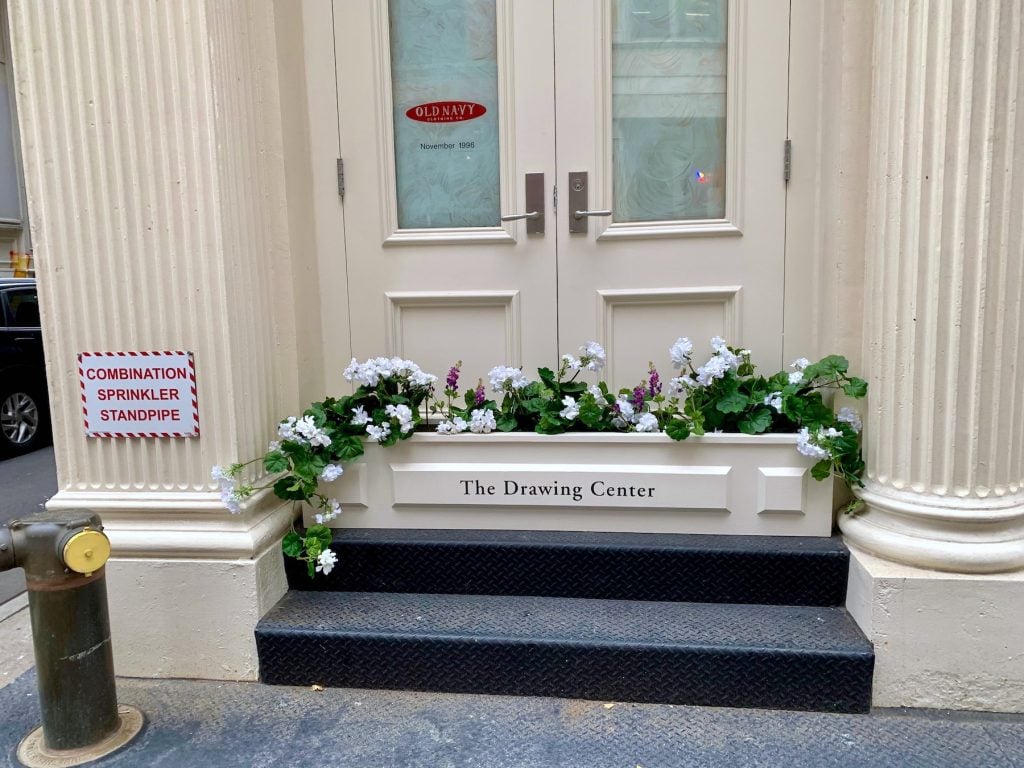
ART CLUB2000, Untitled (Old Navy – November 1996) and What Ever Happened to the Drawing Center’s Planters/Proposal for Two Semi-Permanent Planters (1996). (Photo by Ben Davis.)